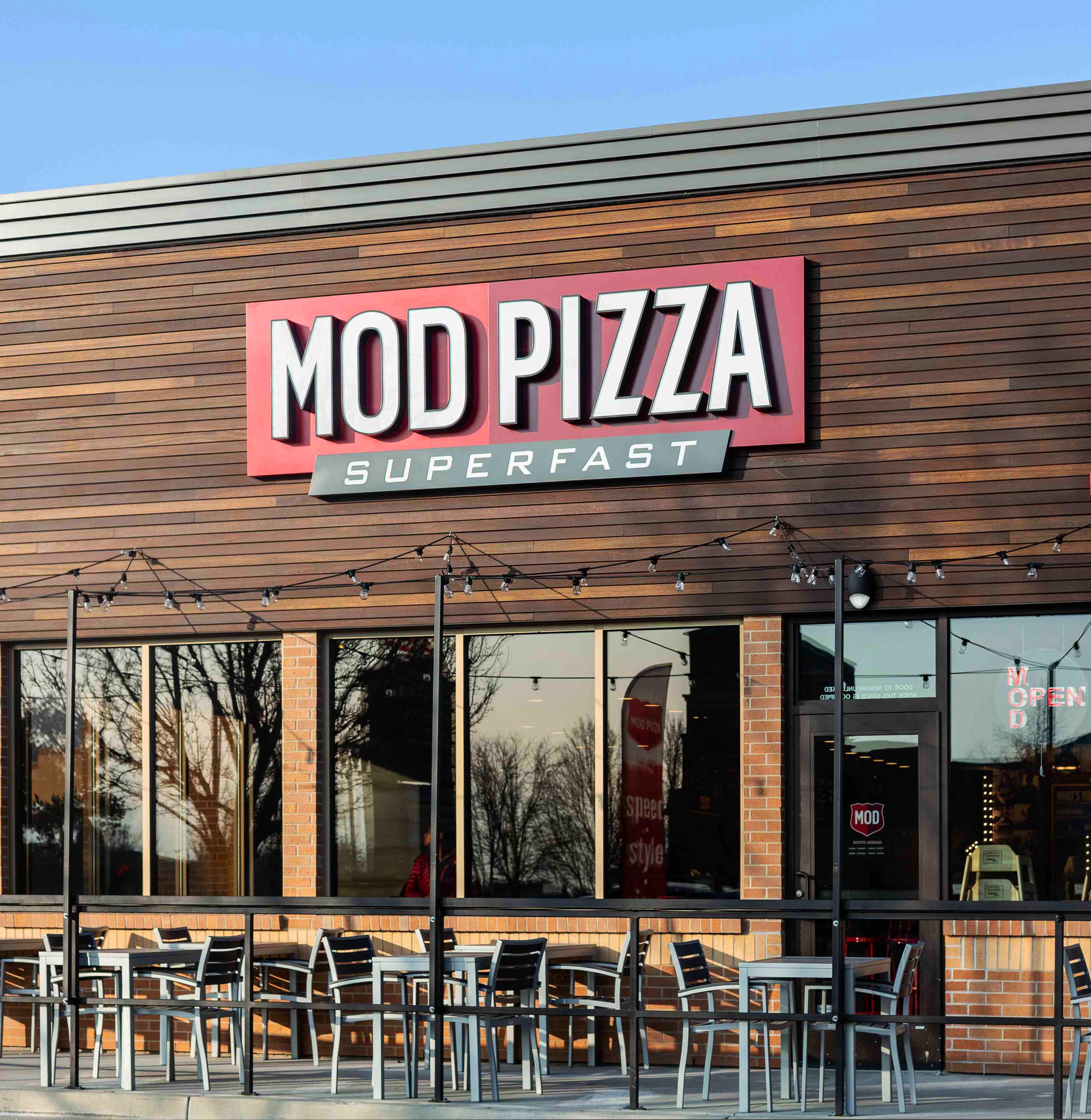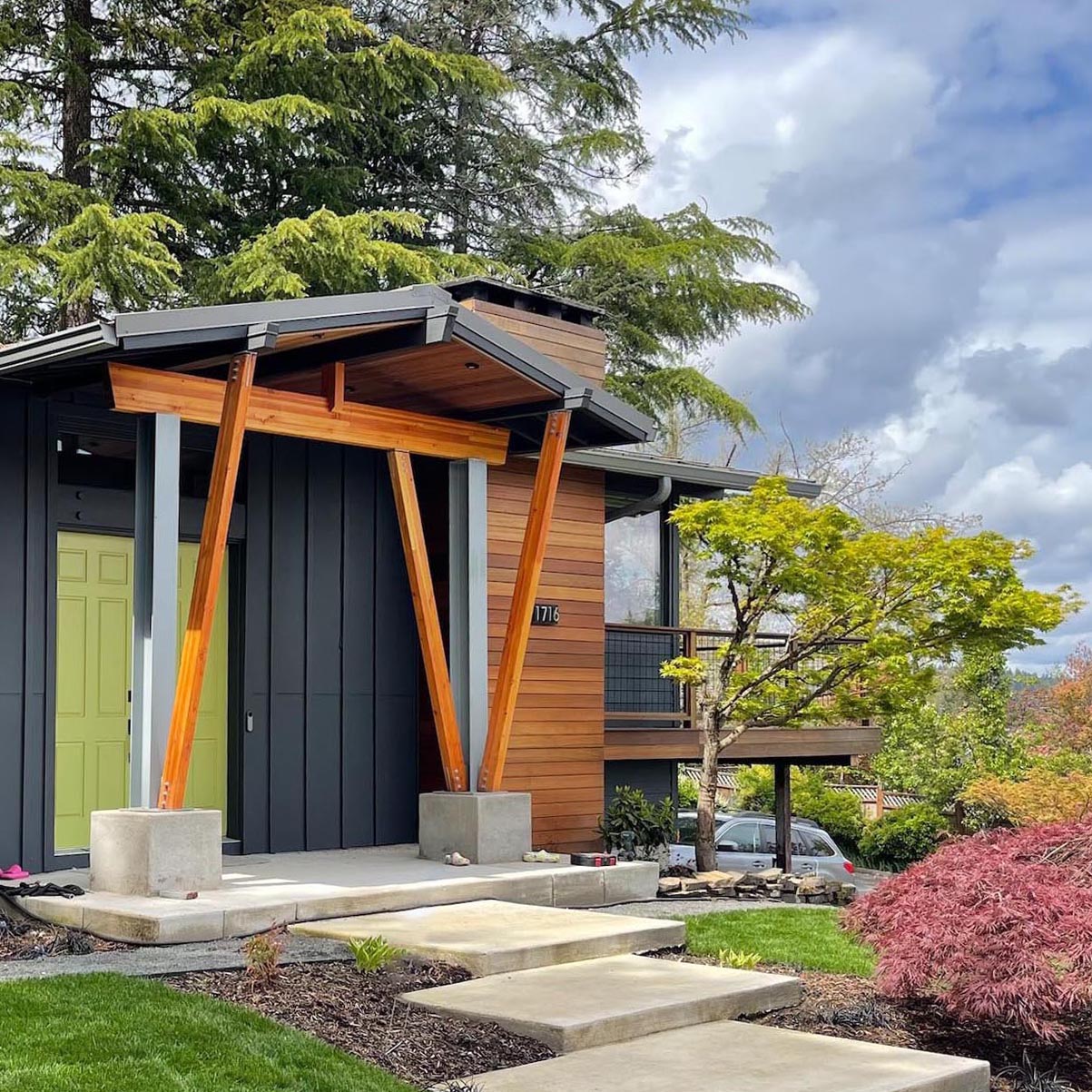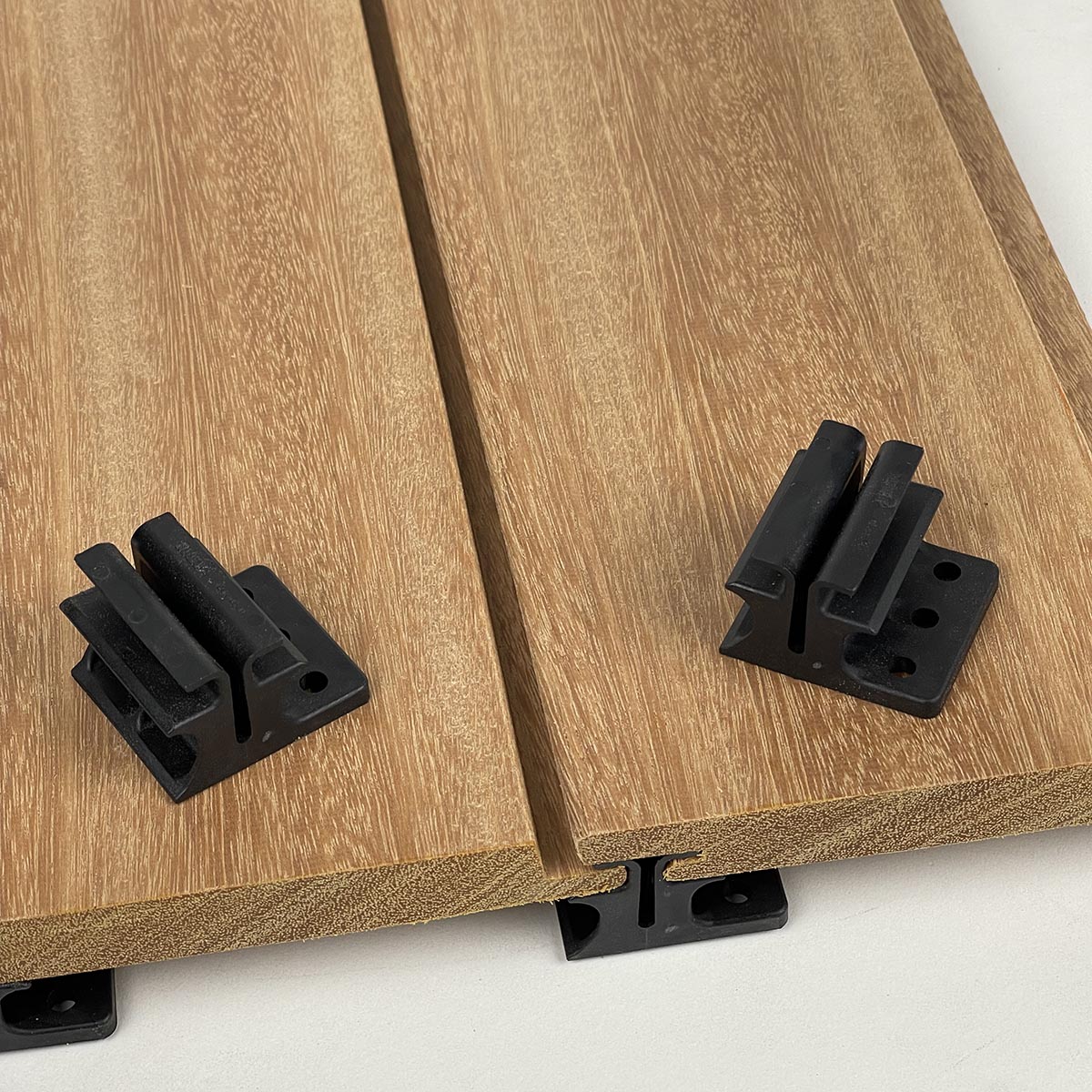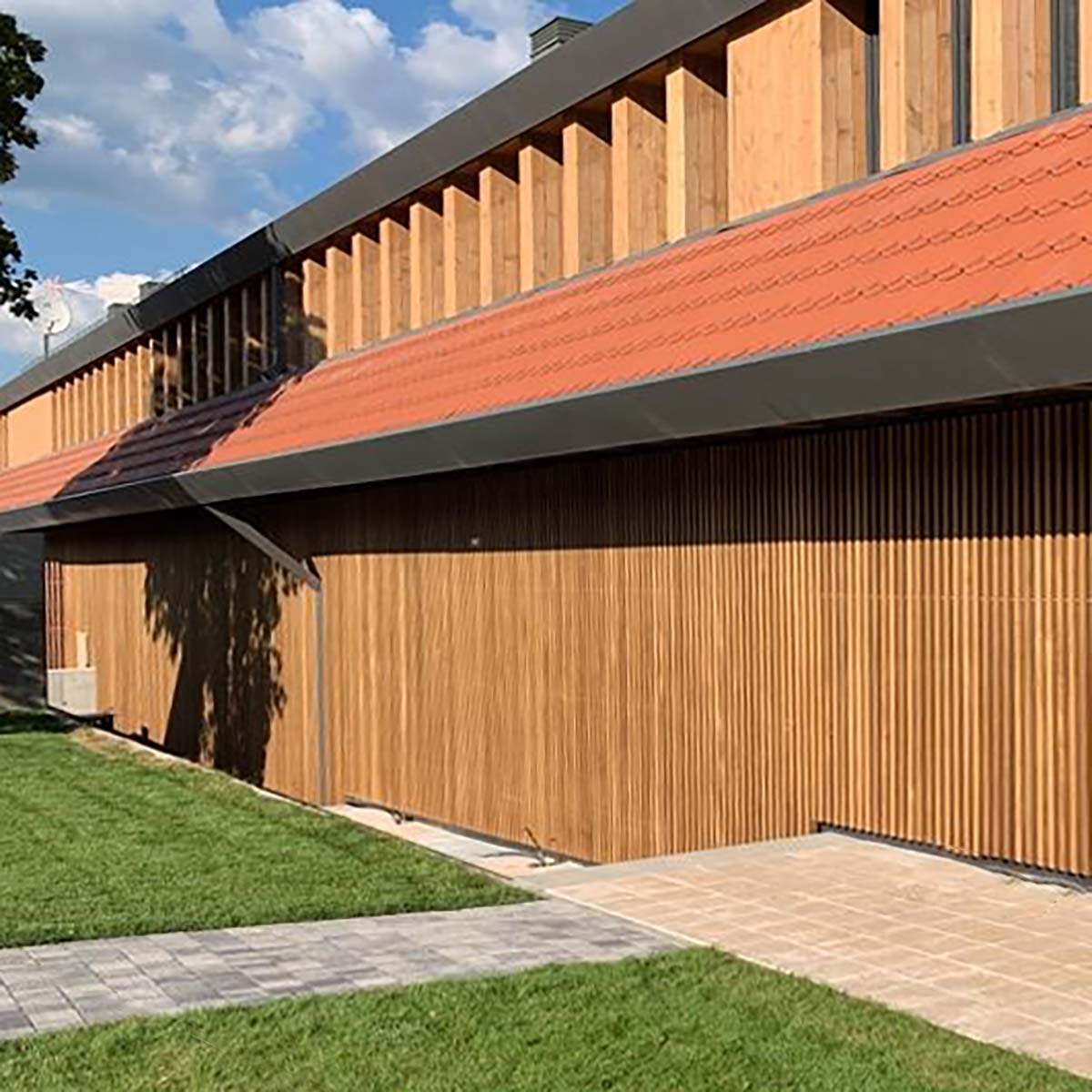7 Best Commercial Exterior Siding Options for 2024
By
Steve Getsiv,
01/26/24
Comparing the 7 Best Commercial Exterior Siding Materials
When it comes to constructing or renovating commercial buildings, choosing the right siding is a crucial decision. Siding protects the structure from elements, and it also significantly impacts aesthetic appeal and maintenance needs.

In this article, we will explore various commercial siding options, their characteristics, and how they align with different architectural requirements and environmental considerations.
We will also introduce Nova USA Wood Product's unique siding solutions, and see they stand out in the market.
Factors to Consider When Choosing Commercial Siding
Durability and Maintenance
When selecting commercial siding, durability should be top of mind. High-quality siding should resist the elements, from harsh sun exposure to freezing temperatures, without warping or fading. It should also withstand impacts from windblown debris.
Aesthetic Appeal
Another substantial factor in selecting commercial siding is aesthetic appeal. The exterior of your building creates the first impression for visitors and passersby, and it reflects your brand's personality and values. Different siding options are available in a wide range of colors, textures, and styles. From traditional brick or timeless wood, to contemporary metal or innovative composite materials, each style can significantly transform your building's visual appeal.
Environmental Impact
The environmental footprint of your commercial siding choice is another key aspect to consider. Different materials have varying levels of environmental impact based on their manufacturing process, lifespan, ability to be recycled, and energy efficiency. Therefore, selecting a siding material that aligns with sustainable practices can contribute to your organization's green initiatives.
Cost
The initial cost of your siding selection is crucial to consider, but it's equally important to anticipate the long-term costs associated with maintenance, repair, and potential replacement. Commercial siding options can range considerably in price due to factors such as material, production process, installation complexity, and market availability.
Commercial Siding Options
Let's take a look at the various commercial siding options available in the market. Each option has its own advantages and considerations. By reviewing the pros and cons, you can make the best choice for your building's exterior.
1. Stucco Siding
Pros
- Aesthetic Appeal: Offers a seamless, customizable look with various paint options
- Energy Efficiency: Provides excellent insulation to help reduce heating and cooling costs
- Durability: Resistant to fire, rot, and pests when properly applied to help ensure longevity
- Sound Barrier: Dampens sound to make it suitable for noisy areas
Cons
- Installation Complexity: Skilled labor required for proper application, which can increase costs
- Maintenance: May develop cracks over time, especially in areas with temperature fluctuations, necessitating periodic repairs
- Rigidity: Lack of flexibility can lead to cracking in earthquake-prone regions
- Water Sensitivity: Improperly applied stucco can absorb water and potentially cause damage in wet climates
Usage
Stucco siding is common in Mediterranean, Spanish, and Southwestern architectural styles. It's ideal for regions with stable climates, and it provides a unique texture and customizable appearance.
2. Metal Siding (Steel, Aluminum)
Pros
- Durability: Both are highly durable, resistant to rot, pests, and fire
- Low Maintenance: Requires minimal upkeep, usually only occasional cleaning
- Longevity: Typically lasts longer than many other materials, with a lifespan of several decades
- Aesthetic Versatility: Available in various colors and finishes, and it suits both modern and traditional designs
Cons
- Dent Susceptibility: Can be prone to dents from impact, which can be challenging to repair
- Thermal Conductivity: Can conduct heat and cold, which can potentially impact energy efficiency without proper insulation
- Corrosion: Steel may rust in humid or coastal environments, while aluminum may corrode or fade in color
- Noise: Can be louder during rain or hail compared to other materials
Usage
Metal siding, particularly steel and aluminum, suits a wide range of buildings, from modern commercial structures to industrial facilities. Its style versatility and high durability make it popular in areas with extreme weather conditions. It's also favored for its contemporary look in urban and commercial settings.
3. Fiber Cement
Pros
- Versatile Appearance: Can mimic wood, stone, or brick for aesthetic choices
- Durable: Highly resistant to rot, termites, and fire, for a long-lasting siding option
- Low Maintenance: Unlike wood, it doesn't require frequent painting or sealing
- Weather Resistant: Performs well in various climates, from extreme heat to cold
Cons
- Complex Installation: Heavier than many other siding materials, which requires specialized installation that can be more costly
- Upfront Cost: Generally more expensive than vinyl, but less than natural stone or wood
- Brittle: Can crack under impact and may not be ideal in earthquake-prone areas
- Moisture Sensitivity: Inadequately installed fiber cement siding can absorb moisture, potentially causing damage in wet climates
Usage
Fiber cement siding is versatile and suitable for a wide range of architectural styles, from traditional homes to modern commercial buildings. It's popular in regions with fluctuating weather due to its resilience and durability. This makes it a favored choice for commercial building owners seeking a balance between aesthetics and long-term performance.
4. Vinyl Siding
Pros
- Cost-Effective: One of the most affordable siding options available
- Low Maintenance: Requires minimal upkeep beyond occasional cleaning
- Design Versatility: Comes in a wide range of colors, styles, and textures
- Durability: Resistant to rot, rust, and pests; no painting or staining required
Cons
- Environmental Impact: Made from PVC, not the most eco-friendly option; may release toxins if burned - that could impact respiratory health of first responders and occupants
- Temperature Sensitivity: Can become brittle and crack in extreme cold or warp in extreme heat
- Aesthetic Limitations: Versatile, but may not offer the same premium look as wood or fiber cement
- Repair and Replacement: Damaged panels often require replacement, which can be noticeable if color has faded or original style is unavailable
Usage
Vinyl siding is commonly used in residential construction due to its cost-effectiveness and low maintenance. It's a practical choice for homeowners and builders seeking a durable, budget-friendly option with various aesthetic choices. While widely used in housing, it can also be found in certain types of commercial buildings where these factors are prioritized.
5. Stone and Brick
Pros
- Aesthetic Appeal: Enhances the building's curb appeal with a timeless, classic look
- Durability: Lasts for decades or even centuries due to its exceptional durability
- Low Maintenance: Requires minimal upkeep and can withstand severe weather conditions
- Fire Resistance: Provides excellent fire resistance as both stone and brick are non-combustible
Cons
- High Cost: Among the most expensive siding options in terms of materials and installation labor
- Weight: Requires a strong structural foundation due to its heavy weight, which can increase construction costs
- Installation Complexity: Labor-intensive installation that requires skilled masonry, which adds to the overall cost
- Limited Insulation: Provides little insulation on its own, and often requires additional insulation materials
Usage
Stone and brick siding are popular in high-end residential and commercial construction where budget is less of a concern. They are commonly used in traditional and historic building styles and can also be incorporated into modern designs as accent features. Due to their durability and classic appeal, stone and brick are ideal for structures that prioritize long-term, quality construction.
6. Composite Materials
Pros
- Innovative Design: Offers various aesthetic options that mimic natural materials in textures and colors
- Durability: Highly resistant to rot, pests, and moisture to help ensure a long lifespan
- Low Maintenance: Requires minimal upkeep unlike natural wood
- Eco-Friendly Options: Many composite sidings are made from recycled materials, for a sustainable choice
Cons
- Cost: Can be pricier than traditional materials like wood or vinyl
- Variability in Quality: Composite materials' quality can vary widely between manufacturers
- Thermal Expansion: Some composites may expand or contract with temperature changes, which should be considered during installation
- Limited Repair Options: Repairing or replacing damaged areas may be more challenging compared to wood
- Adhesives: Composite siding such as formed OSB is manufactured using urea-formaldehyde, phenol-formaldehyde, or poly-methylene diphenyl diisocyanate resins which, if burned expose first responders and occupants to carcinogens
Usage
Composite siding is versatile for both residential and commercial buildings. It's ideal for projects that prioritize sustainability, low maintenance, and aesthetic versatility. It also suits modern architectural designs that require performance, sustainability, and style.
7. Wood Siding
Pros
- Natural Beauty: Offers a classic, timeless aesthetic with unique textures and grains that enhance the building's character
- Versatility: Available in a variety of styles, finishes, and stains to suit different architectural designs
- Insulation Properties: Provides natural insulation that contribute to energy efficiency
- Eco-Friendly: Sustainable options available, especially when sourced from responsibly managed forests
- Customization: Easily customizable in terms of color, style, and finish, for unique design options
- Repair and Modification: Easier to repair and modify compared to many other siding materials
Cons
- Maintenance Requirements: Requires regular maintenance, including painting, staining, and protection against rot and pests
- Susceptibility to Elements: Can be vulnerable to moisture, rot, and insect damage if not properly maintained
- Cost Variability: Depending on the type of wood and treatment, costs can vary, which can potentially make it more expensive than some alternatives
- Flammability: More flammable than materials like brick or metal, though treatments can improve fire resistance
Usage
Wood siding is ideal for a wide range of building types, from traditional residential homes to commercial buildings looking to add warmth and natural beauty. It's particularly favored in settings where the aesthetic value and natural characteristics of wood are desired. The adaptability of wood siding makes it suitable for various climates, especially when properly treated and maintained.
Nova's Unique Commercial Siding Solutions
Nova USA Wood Products offers a diverse and exceptional range of siding options with a focus on exotic hardwoods and innovative designs. Here are some key highlights of their offerings:
Exotic Hardwood Siding

Nova has a range of premium hardwood siding choices that are renowned for their inherent strength and stunning aesthetics, that can enhance the beauty of both residential and commercial structures.
Low Maintenance and High Quality
Nova USA Wood Products are designed for low maintenance without compromising on quality. Nova siding options outlast typical domestic softwoods, and they are an affordable and durable choice for homeowners, builders, and businesses.
Class A Fire Rating
Nova USA Wood Products stands out as a leading importer of fire rated exotic hardwoods by offering products like Batu decking that meet or exceed Class A fire ratings. Fire ratings are crucial in areas with strict fire safety regulations or drier climates like California, Nevada, Arizona, Eastern Oregon, Washington, Idaho, and Utah.
Nova's Bangkirai has been certified by California for Wild Urban Interface (WUI) applications as a Class A material for decking, which further solidifies its position as a provider of safe and reliable decking solutions.
Rainscreen Siding Systems

Nova's innovative rainscreen siding system is expertly crafted to enhance thermal insulation and ensure moisture stability. The system is characterized by an approximately 3/4" air gap strategically placed between the siding material and the building structure.
This feature is especially beneficial when applied to high-density hardwoods such as Ipe, Batu, and Cumaru. Modern configurations of this system, which are clip-attached, include an extra, barely noticeable air gap of around 1/16" between the individual siding boards.
The advanced design significantly boosts the siding's overall effectiveness, in order to provide both durability and adaptability across diverse environmental settings.
Thermally Modified Wood Options

Nova USA Wood Products is a prominent supplier of thermally modified wood that is recognized for its enhanced stability and durability. This innovative process involves the application of high heat to alter the wood's properties, which results in a product that is more stable and durable than its unmodified counterpart. Architects and designers often specify thermally modified wood for decking and siding purposes due to its improved performance characteristics.
Set a New Standard for Commercial Exteriors with NOVA USA Wood Products
With Nova USA Wood Products, you're not just selecting a siding product—you're establishing a new standard for commercial exteriors. Our hardwood siding options are sustainably sourced and environmentally responsible. By choosing Nova USA Wood Products, you can ensure that your construction projects benefit from the latest advancements in siding technology while also contributing positively to environmental sustainability.
Contact us today and speak with one of our experts!
By
Steve Getsiv,
01/26/24
Comments?
Display Name:
Contact Email:
please be respectful of others' opinions and do not use profanity.
comments may be edited for objectionable content.
Email addresses are not publicly posted, and are used to follow up directly with your comment as needed.




























